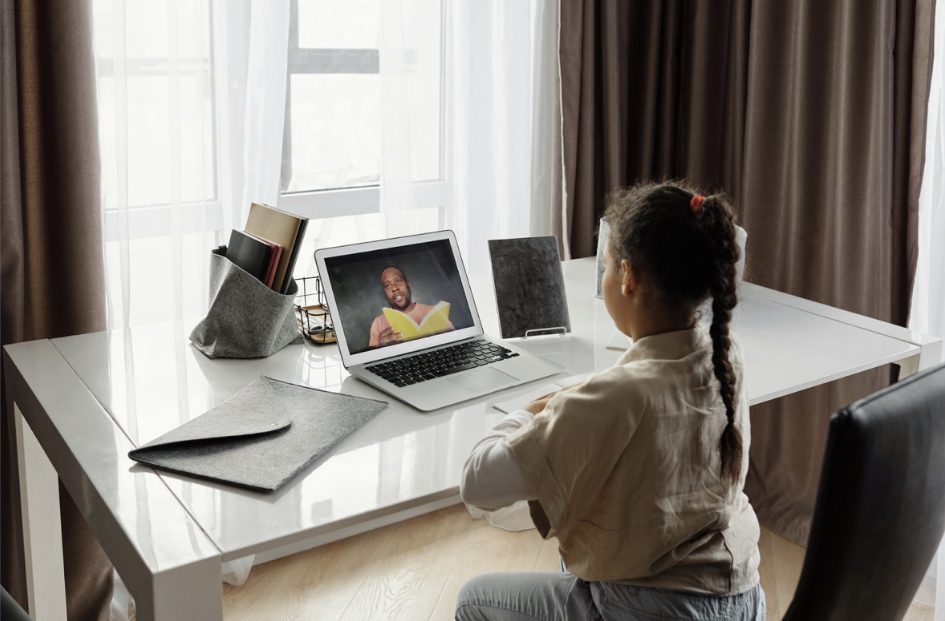When it comes to education, the COVID-19 pandemic has dramatically changed the approach that we take to teaching – lockdowns and restrictions on an international scale have resulted in a significant shift towards remote learning, and a higher focus on how technology can improve the educational experience.
While remote learning experiences will differ on a case by case basis, this shift has resulted in a knowledge gap that has impacted many teachers, to varying extents. In altering their teaching approaches, it is crucial that they focus on measures that will improve results, rather than hindering them.
With this in mind, here is how technology can transform the way you teach.
Improving on Your Teaching Expertise
The first approach that many teachers take in improving how they educate their students is to focus on their own skills. Technology allows you to become more specialised or broaden your knowledge surrounding teaching, with certified online education options that fit almost any niche and support your lifestyle. An example of this is in Courses, which is just one online education provider that demonstrates how everything from TESOL teaching to agriculture can be learned.
Whether you think you could improve on how you approach online education, teaching more broadly, or even what you know regarding psychology and people skills, technology provides an upskilling opportunity that has never been possible before.
Implementing Tech Tools in the Learning Environment
On top of changing your approach to teaching by putting a focus on your own teaching skills, technology allows you to change the way you deliver education on a day to day basis. Using educational technology is an approach that has been increasingly popular in recent years, with growing implementation of laptops and iPads within the classroom, as well as smartboards, a higher focus on interactive learning technology, and more.
Using educational technology as learning tools within the classroom and in a remote setting, if implemented correctly, can provide opportunities for increased student participation, collaboration, creativity and communication. Whether this is through the use of screen recording apps, virtual meetings, collaborative documents, learning management systems, interactive games, or collaborative presenting and quiz-focused programs, the right use of tech tools in the classroom can completely change how students approach their education. They allow a more diverse approach to learning topics, provide the opportunity for participation on a larger scale, and increase student enthusiasm.
Utilising Proven Approaches in a Modern Way
While tech has completely changed the way education is provided today, this isn’t to say that traditional approaches don’t have a place in the learning process. There is an increasing amount of cheap educational tools and approaches available that aim to streamline or replace traditional learning techniques, however understanding when these result in a worsened educational experience, or are ineffective as a whole is crucial in knowing when to implement new learning tech.
In achieving a strong mix of traditional and modern approaches to education, it is crucial that teachers make an approach that is based on key learning objectives and principles – ensuring students stay on task, increasing student engagement, ensuring that the methods applied are effective in communicating knowledge, and allowing for flexibility and accessibility are examples of this.
A Focus on Collaboration
When providing remote education, it is important that students continue to engage in collaborative learning – despite being limited in that each student is separate, there are a number of approaches and tools that can allow students to interact with each other, building on key characteristics, developing interpersonal skills and improving approaches to communication and teamwork in general.
This might include using approaches that involve breakout rooms, group work, the creation of presentations and group reports, group discussions, quizzes that allow for everyone to participate, and more. Implementing collaborative processes such as these is an important step in ensuring a well rounded learning experience that isn’t hindered by remote learning.
More Effective Assessment and Review Processes
In addition to the benefits that technology brings to preparing teaching processes on a day to day basis, it can also provide advantages when it comes to reviewing student performance and assessing the quality of work completed.
With the help of digital models and comprehensive educational software, teachers can set out tasks and assignments, monitor completion, and review work, in a manner that is centralised and carried out in real time. This also allows teachers to take statistics such as the average time taken to complete a task into account, thus providing teachers with the ability to make improvements moving forward. Finally, this software allows teachers to keep track of students that are ahead or behind of the average, giving attention where necessary.
Allowing Students to Work at Their Own Pace
Online learning provides both teachers and students with flexibility – more specifically, this means that students are able to work at their own pace. Unlike a traditional classroom setting, where a group of students will have to keep up with the pace of the teacher, an online setting means that work can be set out in a more flexible manner.
This can also be implemented by setting out video lessons and lectures ahead of time – doing so will mean that students are allowed to access their education whenever it is convenient, can pause progress within a class whenever they need to catch up, and can continue ahead if they are confident with the learning material.
Concluding thoughts…
Ultimately, a shift to remote learning has brought with it a need for more structured, tech focused learning processes, whether this is in the extent to which teachers are educated themselves, the way that students communicate with each other, or the manner in which teachers organise and plan their classes. While many continue to see remote learning as a hindering factor in providing high quality education, it is clear that there is significant potential for improvements to be made in the efficiency, effectiveness and flexibility of education. Despite the factors that will differ depending on the area of education, technology provides the opportunity for significant advancements to be made, both in physical learning environments and within remote learning settings.
This was a guest post by Lucy Mitchell




